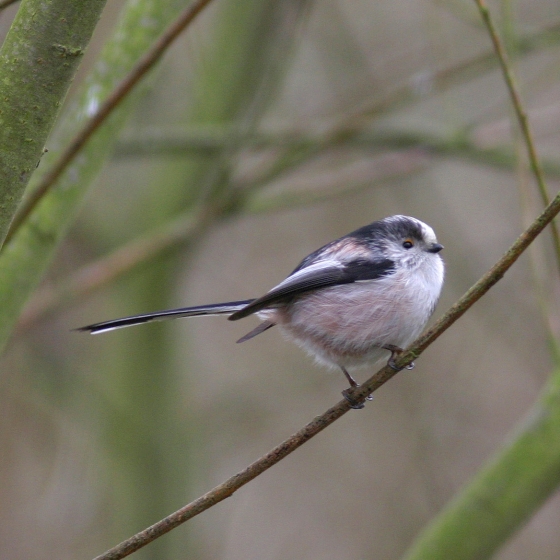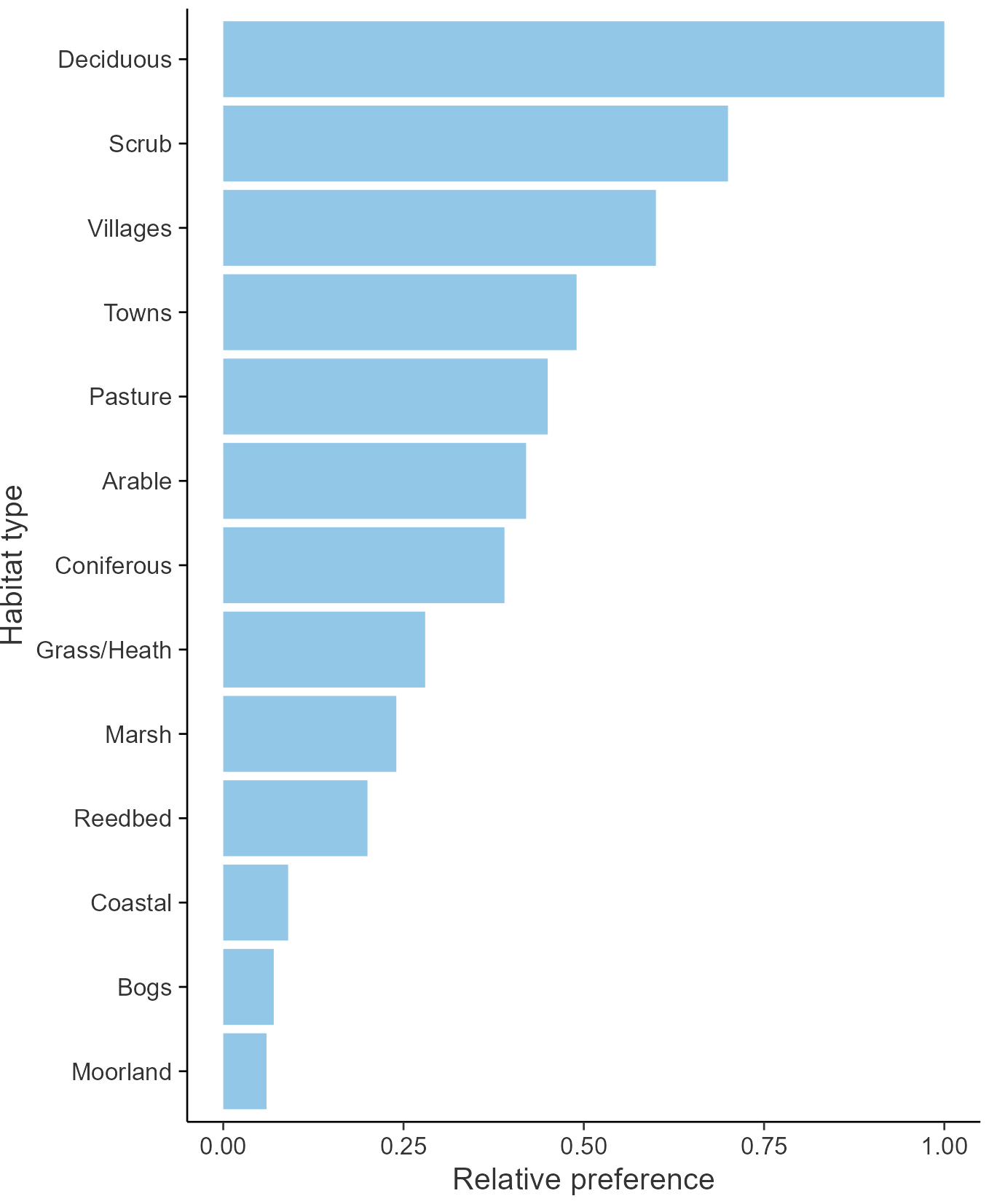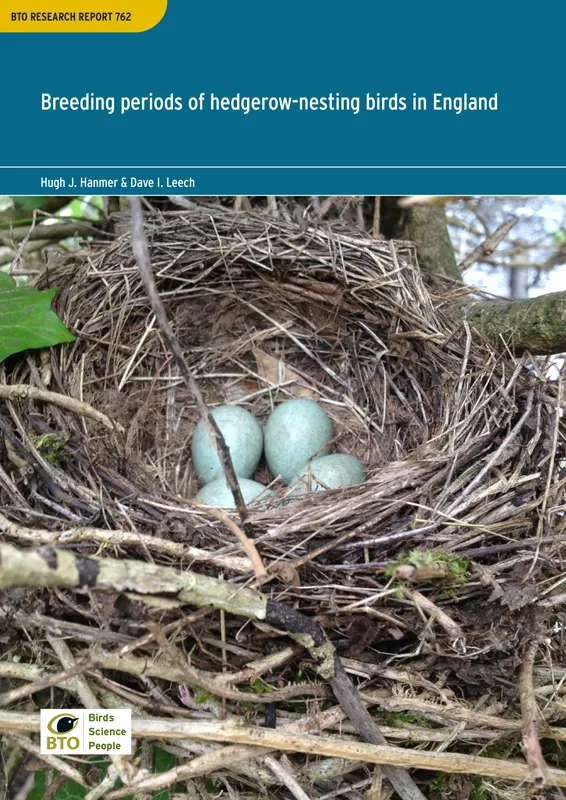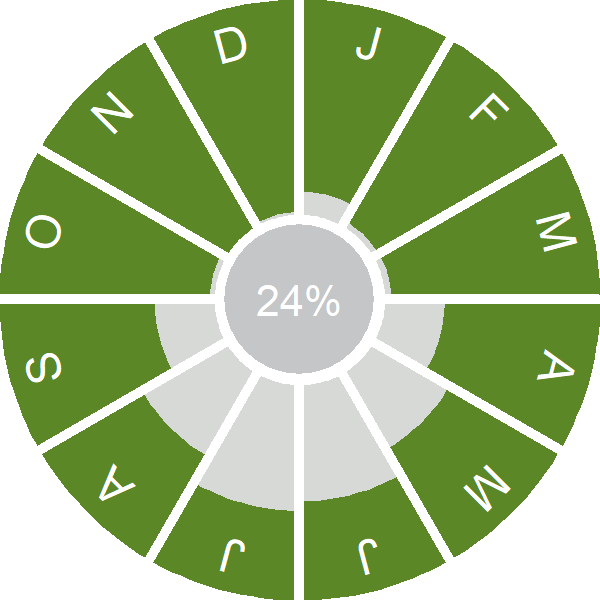Long-tailed Tit

Introduction
This small, sociable species can be found year round throughout Britain & Ireland, apart from on the highest peaks and farthest flung Scottish islands.
Long-tailed Tits live up to their name, with tails that are noticeably longer than their bodies. They have pale underparts contrasting with darker wings and tail, distinctive black stripes on an otherwise white head, and blush pink on the breast, wings and eye-ring. Long-tailed Tits typically lay a single clutch of eggs in March and April in a beautifully intricate domed nest, constructed of lichen and cobwebs, and lined with up to 1,500 feathers. This species has a co-operative breeding strategy, with younger birds helping breeding pairs to rear chicks. Males and females look alike.
Being small, Long-tailed Tits are susceptible to harsh weather, and as a result, their numbers fluctuate. However, it is on the Green List in both the UK and Ireland. The species favours woodland habitats, but is also found in hedgerows, parks and gardens. Birds often move in extended family groups and can be heard calling to each other and they flutter from perch to perch. In winter, they will form flocks with other small species.
- Our Trends Explorer gives you the latest insight into how this species' population is changing.

Key Stats
Identification
ID Videos
This section features BTO training videos headlining this species, or featuring it as a potential confusion species.
#BirdSongBasics: Chiffchaff and Long-tailed Tit
Songs and Calls
Call:
Begging call:
Status and Trends
Conservation Status
Population Change
The starting years of the long-term monitoring periods coincides with a trough in population, thus exaggerating the long-term trend. CBC/BBS index trends show progressive increases in Long-tailed Tit abundance beginning in the early 1980s. The BBS map of change in relative density between 1994-96 and 2007-09 indicates that increase occurred almost throughout the UK range over that period, most strongly in northern England. Numbers across Europe have been broadly stable since 1980 (PECBMS: PECBMS 2020a>).
Distribution
Long-tailed Tits are widespread in Britain & Ireland, occupying 83% of 10-km squares in winter and 78% in the breeding season. The only gaps in range occur on upland moors in mainland Scotland, on the Outer Hebrides and Northern Isles, and in central and western Ireland. Densities are highest in wooded lowland areas of Britain and Ireland.
Occupied 10-km squares in UK
or view it on Bird Atlas Mapstore.
or view it on Bird Atlas Mapstore.
European Distribution Map
Distribution Change
Long-tailed Tits are particularly vulnerable to cold weather, and the 22% winter range expansion since the 1981–84 Winter Atlas could reflect an increase in numbers, with birds spreading farther into upland marginal areas following a series of mild winters.
Change in occupied 10-km squares in the UK
or view it on Bird Atlas Mapstore.
or view it on Bird Atlas Mapstore.
Seasonality
Long-tailed Tit is recorded throughout the year, more so outside the breeding season when large mobile and noisy flocks are easily detected.
Weekly pattern of occurrence
The graph shows when the species is present in the UK, with taller bars indicating a higher likelihood of encountering the species in appropriate regions and habitats.

Habitats
Breeding season habitats
Relative frequency by habitat
The graph shows the habitats occupied in the breeding season, with the most utilised habitats shown at the top. Bars of similar size indicate the species is equally likely to be recorded in those habitats.

Movement
Britain & Ireland movement
Foreign locations of birds ringed or recovered in Britain & Ireland
Dots show the foreign destinations of birds ringed in Britain & Ireland, and the origins of birds ringed overseas that were subsequently recaptured, resighted or found dead in Britain & Ireland. Dot colours indicate the time of year that the species was present at the location.
- Winter (Nov-Feb)
- Spring (Mar-Apr)
- Summer (May-Jul)
- Autumn (Aug-Oct)

European movements
EuroBirdPortal uses birdwatcher's records, such as those logged in BirdTrack to map the flows of birds as they arrive and depart Europe. See maps for this species here.
The Eurasian-African Migration Atlas shows movements of individual birds ringed or recovered in Europe. See maps for this species here.
Biology
Productivity and Nesting
Nesting timing
Egg measurements
Clutch Size
Incubation
Fledging
Survival and Longevity
Survival is shown as the proportion of birds surviving from one year to the next and is derived from bird ringing data. It can also be used to estimate how long birds typically live.
View number ringed each year in the Online Ringing Report.
lifespan
Survival of adults
Survival of juveniles
Biometrics
Wing length and body weights are from live birds (source).
Wing length
Body weight
Ring Size
Classification, names and codes
Classification and Codes
- Order: Passeriformes
- Family: Aegithalidae
- Scientific name: Aegithalos caudatus
- Authority: Linnaeus, 1758
- BTO 2-letter code: LT
- BTO 5-letter code: LOTTI
- Euring code number: 14370
Alternate species names
- Catalan: mallerenga cuallarga eurasiàtica
- Czech: mlynarík dlouhoocasý
- Danish: Halemejse
- Dutch: Staartmees
- Estonian: sabatihane
- Finnish: pyrstötiainen
- French: Orite à longue queue
- Gaelic: Cailleach-bheag-an-earbaill
- German: Schwanzmeise
- Hungarian: oszapó
- Icelandic: Skottmeisa
- Irish: Meantán Earrfhada
- Italian: Codibugnolo
- Latvian: garastite
- Lithuanian: šiaurine ilgauodege zyle
- Norwegian: Stjertmeis
- Polish: raniuszek (zwyczajny)
- Portuguese: chapim-rabilongo
- Slovak: mlynárka dlhochvostá
- Slovenian: dolgorepka
- Spanish: Mito común
- Swedish: stjärtmes
- Welsh: Titw Cynffonhir
Research
Causes of Change and Solutions
Causes of change
This species undergoes wide fluctuations in numbers between breeding seasons. Inter-annual variation in adult survival is driven by weather conditions; however spring and autumn weather may sometimes be more important than winter weather.
Further information on causes of change
This species undergoes wide fluctuations in numbers between breeding seasons, suffering heavy mortality in some years but able to recover quickly by virtue of its high breeding potential. Modelling suggests that climate change may have had a positive impact on the long-term trend for this species (Pearce-Higgins & Crick 2019). In an ongoing mark-recapture study near Sheffield, weather explained 73% of the inter-annual variation in adult survival during 1994-2012: warm springs and autumns increased survival, wet springs reduced survival but, during the period of study, winter weather had little effect (Gullett et al. 2014). The same study found that warm weather in March depressed recruitment in the following year, whereas warm May weather enhanced it (Gullett et al. 2015). Numbers across England were low after the severe winters of the early 1960s and again during a series of relatively cold winters beginning in the late 1970s, and fell slightly again after the cold winters around 2010, but winter mortality might not be the primary cause.
Clutches have become smaller since the 1960s and, curiously, nest losses have switched from the egg to the chick stage. There has been no overall trend in the number of fledglings per breeding attempt. The marked trend towards earlier laying may be explained by recent climatic changes (Crick & Sparks 1999).
Information about conservation actions
The population of this species has increased since the 1980s with minor fluctuations, hence it is not a species of concern and no conservation actions are currently required.
Research focused on this species is limited and hence few specific conservation actions have been proposed to help benefit Long-tailed Tits. A Finnish study found that long-tailed tits were most likely to be found in 1-km squares containing deciduous/mixed and alder forest (Jansson & Saari 1999). This suggests that planting patches of deciduous trees within coniferous forests could help long-tailed tits, although this action is of little relevance across most of the UK where suitable habitats already exist.
Publications (3)
Breeding periods of hedgerow-nesting birds in England
Author: Hanmer, H.J. & Leech, D.I.
Published: Spring 2024
Hedgerows form an important semi-natural habitat for birds and other wildlife in English farmland landscapes, in addition to providing other benefits to farming. Hedgerows are currently maintained through annual or multi-annual cutting cycles, the timing of which could have consequences for hedgerow-breeding birds.The aim of this report is to assess the impacts on nesting birds should the duration of the management period be changed, by quantifying the length of the current breeding season for 15 species of songbird likely to nest in farmland hedges. These species are Blackbird, Blackcap, Bullfinch, Chaffinch, Dunnock, Garden Warbler, Goldfinch, Greenfinch, Linnet, Long-tailed Tit, Robin, Song Thrush, Whitethroat, Wren and Yellowhammer.
05.03.24
Reports Research reports

Birds of Conservation Concern Wales 4: the population status of birds in Wales
Author: Johnstone, I.G., Hughes, J., Balmer, D.E., Brenchley, A., Facey, R.J., Lindley, P.J., Noble, D.G. & Taylor, R.C.
Published: 2022
The latest review of the conservation status of birds in Wales. The report assessed all 220 bird species which regularly occur in Wales. There are now 60 species of bird on the Red List, with 91 on the Amber List and just 69 - less than a third of the total number of species - on the Green List.
06.12.22
Reports Birds of Conservation Concern

Breeding season weather determines long-tailed tit reproductive success through impacts on recruitment
Author: Gullett, P.R., Hatchwell, B.J., Robinson, R.A. & Evans, K.L.
Published: 2015
16.09.15
Papers

